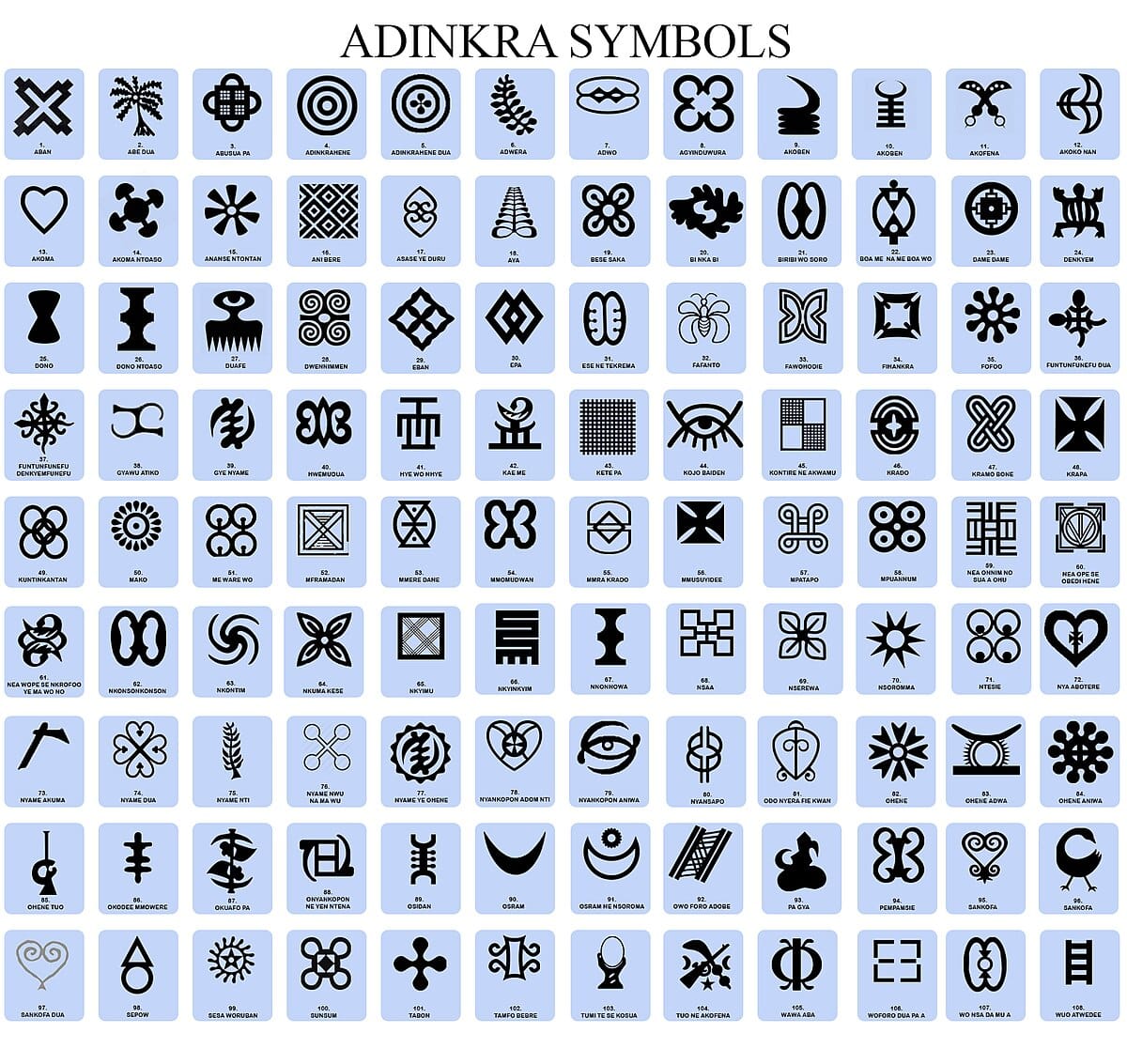Across much of Ghana today, Adinkra symbols decorate everything from clothing to furniture, official buildings (in the form of logos) and more. Their shapes are immediately recognisable, featuring stylised birds, spirals and interlocked figures. While they make for striking imagery, Adinkra is far more than an aesthetic tool.
Like Nsibidi in southeastern Nigeria, Adinkra is a West African system of thought coded into visual form. It is not an alphabet, nor a script, but a philosophy that condenses proverbs, moral principles, and social order into compact signs. Each symbol is a fragment of Akan cosmology, passed down across centuries.
In this article, we will explore the origins of the symbols, the meanings of some of the most popular symbols and their enduring relevance across Africa and beyond.
Origins of Adinkra
According to a popular oral tradition, Adinkra symbols were originally created by the Bono people of Gyaman, a precolonial Akan kingdom in present-day Ghana and Côte d’Ivoire. Nana Kwadwo Agyemang Adinkra, the Gyaman king who ruled from 1810 to 1820, was said to have designed them on clothing and named the style after himself. Soon, the usage of Adinkra spread to Asante and other Akan kingdoms, so much that the symbols became a part of their culture.
However, historians believe this oral tradition of a Gyaman origin is false. This is because the tradition posits that it was during the Gyaman-Asante war (1818-19) that the Asante learnt Adinkra symbols from Gyaman. Yet, when English explorer Thomas Bowdich visited Kumasi in 1817, he had already seen and written about Adinkra cloth being produced in the Asante capital of Kumasi.
Thus, the alternative explanation for the name of the symbols is that when King Adinkra’s body was found and retrieved from a pile of dead bodies, it was wrapped in a stamped cloth called Ntiamu Ntoma. Subsequently, Ntiamu Ntoma would be called Adinkra cloth. In some parts of Ghana, Adinkra cloth is still referred to as Ntiamu Ntoma.
The oldest surviving adinkra cloth was made in 1817, bought by Bowdich in Kumasi and donated to the British Museum. It features 15 stamped symbols which were printed using carved calabash stamps and a vegetable-based dye. The next oldest piece of adinkra cloth was sent in 1825 from the Elmina Castle, a former slave trading post, to The Hague in the Netherlands.
A Cloth that Speaks
Interestingly, in the Akan or Twi-Fante language, the term adinkra refers to a particular type of cloth with the symbols rather than the symbols themselves. Adinkra cloths were originally worn only by royals and spiritual leaders on special occasions. More so, in Twi, ‘adinkra’ also means ‘goodbye’ or ‘farewell’, making the adinkra cloth befitting for burial ceremonies.
Depending on the occasion and status of the wearer, the adinkra patterns were hand-printed on plain red, dark brown or black hand-woven cotton fabrics. However, nowadays, the patterns are mass produced on brighter coloured fabrics. The cloths are most prominently produced in Ntonso, a town near Kumasi. The process of making adinkra cloth is rather laborious and time-consuming, much like that of Kenya’s Kiondo woven fabric.
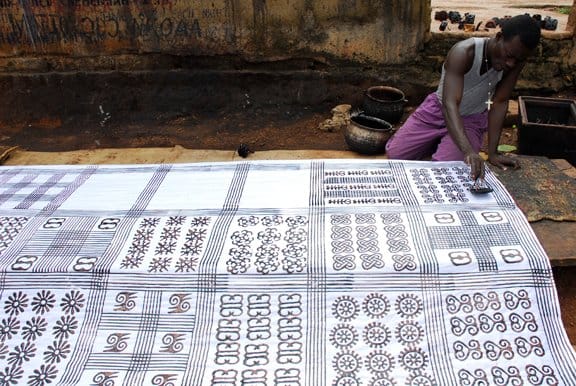
An artisan printing Adinkra with a stamp in Ntonso. Source: Artprof, Wikmedia commons.
First, to make the dark adinkra ‘aduro’ pigment, artisans soak, pulverise and boil the inner bark and roots of the badie tree in water over a wood fire. After the dark colour is released, the mixture is strained and boiled until it thickens—a process that lasts for hours. The stamps, measuring between 5 and 8 cm2, are carved out of the bottom of a calabash piece. Artisans apply the dye to the fabrics with a rocking motion of the stamps.
Adinkra Symbols and Their Meanings
There are over 120 Adinkra symbols, each linked to a proverb, moral lesson or cosmological idea. Here are a few of the most widely recognised and used symbols:
· Gye Nyame : meaning ‘except God’, this symbol represents the omnipotence and supremacy of God. It is featured on Ghana’s largest denomination banknote, the 200 cedi note, as well as many university crests.
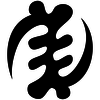
Source: adinkrasymbols.org
· Sankofa: meaning ‘return and get it’, this symbol reminds us of the importance of learning from the past to build a better future. It comes from the Akan proverb, ‘Se wo were firi na wosan kofa a, yenkyiri," which means, ‘It is not a taboo to go back for what you forgot’. While Gye Nyame is the most popular Adinkra symbol in Ghana, Sankofa is even more widely used outside of Ghana, especially by Black people in the literary community. It comes in two variants, one a mythical bird with its head turned backwards and the other, a stylised heart with spirals.


The two forms of Sankofa. Source: adinkrasymbols.org
· Adinkrahene: meaning ‘king of adinkra’, this symbol demotes authority, charisma and leadership. It is often associated with kings.

· Odo Nyera Fie Kwan: meaning ‘love does not lose its way home’, this symbol is as beautiful as it is poetic.
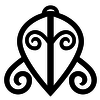
· Fawohodie: This means ‘freedom’ or ‘independence’. It is derived from the Akan proverb ‘Fawohodie ne obre na enam,’ which literally translates to ‘Freedom walks with suffering.’

· Akoma: This simple symbol means ‘heart’, signifying love, goodwill and faithfulness. It is often used in relation to marriage and community life.

· Duafe: drawn as a wooden comb, this symbolises femininity, fondness and care.

· Dwennimmen: meaning ‘ram’s horns’, this symbolises strength, humility and wisdom. The symbol is a prominent feature in the logo of the University of Ghana.
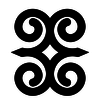
· Aya: meaning ‘fern’, this symbolises resilience as ferns are able to grow in the most unlikely of places. It also symbolises endurance and resourcefulness.

· Bese Saka: meaning ‘bunch of kola nuts’, this symbolises affluence, power and unity.

From the above list, it is clear how a simple fabric featuring multiple Adinkra symbols is packed with meaning and culture. This effectively turns Adinkra clothes into open books of Akan philosophy. Although, it is important to note once more that Adinkra symbols are not restricted to clothes; anything can be a canvas for adinkra. They are carved in furniture, painted onto the walls of important buildings such as shrines and palaces, and increasingly used in tattoo art.
The Relevance of Adinkra Across Borders
Adinkra did not remain confined to Ghana. Like Nsibidi, Adinkra has served as a bridge to the continent for Africans in the diaspora. During the Harlem Renaissance of the 1920s-30s, African American intellectuals used Adinkra symbols in their efforts to reclaim their African heritage. And later in the 60s and 70s, Adinkra prominence resurfaced in the Black Power and Pan-African movements amongst the African American community. Sankofa, in particular, was a rallying symbol for learning from African history.
Today, Adinkra stands at the intersection of heritage and innovation. Artisans in Ntonso still hand-stamp cloth with badie dye, preserving techniques that stretch back two centuries. At the same time, contemporary designers incorporate Adinkra into digital art, streetwear, architecture and even jewellery. Universities use the symbols in their logos, while Ghanaian state institutions embed them into official insignia.
The script is also finding a place in global pop culture, though with mixed results. For instance, some considered American company Vera Bradley’s use of the symbols for its backpacks an exploitation of Ghanaian culture—especially considering the bags were sold for over $100 apiece. For others, such use cases positively represent the diffusion of Akan culture.
What remains undeniable is that Adinkra is more than aesthetics. It is a philosophical system encoded in form, a potent reminder that culture can be expressed in various forms.
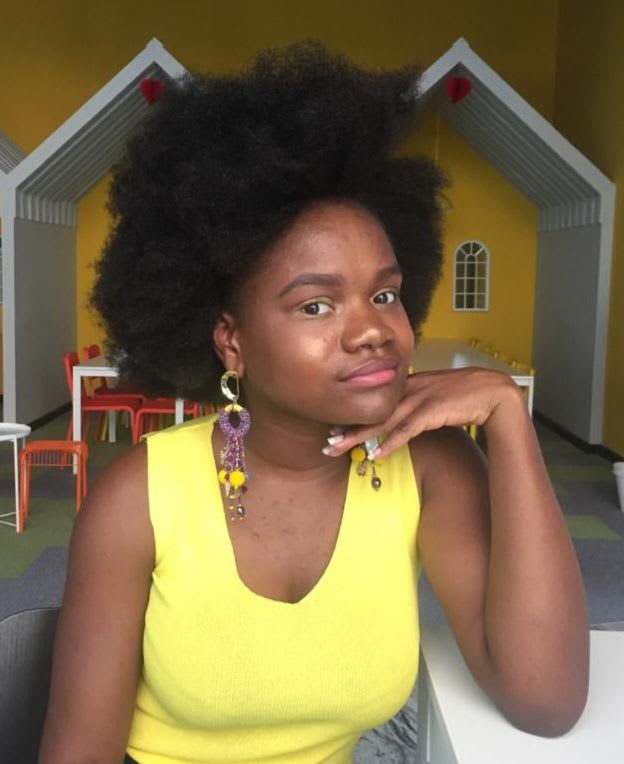
Oyindamola Depo Oyedokun
Oyindamola Depo Oyedokun is an avid reader and lover of knowledge, of most kinds. When she's not reading random stuff on the internet, you'll find her putting pen to paper, or finger to keyboard.
follow me :
Leave a Comment
Sign in or become a Africa Rebirth. Unearthing Africa’s Past. Empowering Its Future member to join the conversation.
Just enter your email below to get a log in link.

